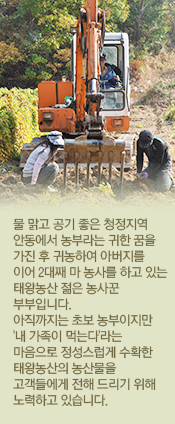Copyright for Photographers: How to Protect Your Creative Work
페이지 정보
Jodie
0
35 2024.03.24 01:01
짧은주소
- Short URL : //wangma.co.kr/board/bbs/?t=1Bd 주소복사
본문
Copyright for Photographers: How to Protect Your Creative Work
In today's digital age, where images are easily accessible and shareable, protecting your creative work as a photographer has become more important than ever. Copyright laws are designed to safeguard creative works, including photographs, from unauthorized use and distribution. As a photographer, understanding copyright and taking the necessary steps to protect your work can ensure that you retain control over your creations and receive the recognition and compensation you deserve. In this article, we will delve into the topic of copyright for photographers and provide you with actionable steps to safeguard your creative work.
What is Copyright?
Copyright is a legal right granted to the creator of an original work, giving them exclusive rights to use and distribute that work. It is a form of intellectual property protection that applies to various creative works, including photographs. Copyright law allows photographers to control how their images are used, reproduced, and distributed, as well as to benefit financially from their work.
When is Copyright Automatically Granted?
In most countries, including the United States, copyright is automatically granted to the creator of an original work as soon as it is fixed in a tangible form. In the case of photography, this means that as soon as you press the shutter button and capture an image, you hold the copyright to that photograph. However, proving that you are the original creator of a photograph may be challenging if a dispute arises. To establish a strong case for copyright infringement, it is recommended to register your photographs with the appropriate copyright office.
How to Protect Your Creative Work:
1. Understand Copyright Laws: To protect your creative work, it is crucial to have a solid understanding of copyright laws in your country. Familiarize yourself with the specific regulations and requirements related to photography, as they may differ from other creative fields. Stay updated with any changes in copyright (http://yongle.today/) legislation to ensure you are fully equipped to protect your work.
2. Add Copyright Notices: Including copyright notices on your photographs is a simple yet effective way to communicate your ownership and rights. A copyright notice typically consists of the symbol ©, the year of creation, and your name. For example, "© [Year of Creation] [Your Name]." Adding copyright notices to your images can deter potential infringers and make it clear that your work is protected.
3. Register Your Photographs: While copyright is automatically granted, registering your photographs with the appropriate copyright office strengthens your legal position. In the United States, you can register your images with the U.S. Copyright Office (www.copyright.gov). Registration provides several advantages, such as the ability to seek statutory damages and attorney's fees in the event of infringement. Registering your photographs also creates a public record of your copyright ownership, making it easier to prove your rights if a dispute arises.
4. Use Watermarks: Watermarking your photographs involves embedding a visible mark, such as your logo or name, on the image itself. While watermarks do not provide absolute protection, they serve as a visual deterrent against unauthorized use. Watermarks can be placed strategically to avoid significant interference with the image while still asserting your ownership and discouraging potential infringers.
5. Licensing and Contracts: One way to protect your work and control its use is through licensing agreements and contracts. When licensing your photographs, clearly define the terms and conditions of use, including the duration, scope, and purpose. Ensure that the licensee acknowledges your copyright and agrees to abide by the specified terms. Contracts can also be used when working with clients or other parties involved in the creation and distribution of your photographs. Having a well-drafted contract can help protect your rights and prevent misunderstandings.
6. Monitor and Enforce: Regularly monitor the use of your photographs online and offline to identify any unauthorized uses or infringements. Utilize reverse image search tools and online platforms dedicated to tracking image usage. If you discover an infringement, take appropriate action to enforce your rights. This may involve sending cease and desist letters, filing infringement claims, or seeking legal advice. Promptly addressing infringements demonstrates your commitment to protecting your work and can deter potential infringers.
7. Educate Your Clients and Audience: Educating your clients, as well as the general public, about copyright and the importance of respecting intellectual property rights can go a long way in preventing unauthorized use. Include information about copyright in your client contracts, website, and social media platforms. Explain that unauthorized use of your photographs is not only ethically wrong but also illegal. By raising awareness, you can foster a culture of respect for creative works and encourage others to support and protect artists' rights.
Conclusion:
As a photographer, your creative work is your livelihood, and protecting it is paramount. Understanding copyright laws, registering your photographs, adding copyright notices, using watermarks, and employing licensing agreements are all essential steps in safeguarding your images. Regular monitoring and enforcement, along with educating your clients and audience, can further strengthen your defense against copyright infringement. By taking proactive measures to protect your creative work, you can maintain control, receive recognition, and preserve the value of your photographs in an increasingly digital world.
In today's digital age, where images are easily accessible and shareable, protecting your creative work as a photographer has become more important than ever. Copyright laws are designed to safeguard creative works, including photographs, from unauthorized use and distribution. As a photographer, understanding copyright and taking the necessary steps to protect your work can ensure that you retain control over your creations and receive the recognition and compensation you deserve. In this article, we will delve into the topic of copyright for photographers and provide you with actionable steps to safeguard your creative work.
What is Copyright?
Copyright is a legal right granted to the creator of an original work, giving them exclusive rights to use and distribute that work. It is a form of intellectual property protection that applies to various creative works, including photographs. Copyright law allows photographers to control how their images are used, reproduced, and distributed, as well as to benefit financially from their work.
When is Copyright Automatically Granted?
In most countries, including the United States, copyright is automatically granted to the creator of an original work as soon as it is fixed in a tangible form. In the case of photography, this means that as soon as you press the shutter button and capture an image, you hold the copyright to that photograph. However, proving that you are the original creator of a photograph may be challenging if a dispute arises. To establish a strong case for copyright infringement, it is recommended to register your photographs with the appropriate copyright office.
How to Protect Your Creative Work:
1. Understand Copyright Laws: To protect your creative work, it is crucial to have a solid understanding of copyright laws in your country. Familiarize yourself with the specific regulations and requirements related to photography, as they may differ from other creative fields. Stay updated with any changes in copyright (http://yongle.today/) legislation to ensure you are fully equipped to protect your work.
2. Add Copyright Notices: Including copyright notices on your photographs is a simple yet effective way to communicate your ownership and rights. A copyright notice typically consists of the symbol ©, the year of creation, and your name. For example, "© [Year of Creation] [Your Name]." Adding copyright notices to your images can deter potential infringers and make it clear that your work is protected.
3. Register Your Photographs: While copyright is automatically granted, registering your photographs with the appropriate copyright office strengthens your legal position. In the United States, you can register your images with the U.S. Copyright Office (www.copyright.gov). Registration provides several advantages, such as the ability to seek statutory damages and attorney's fees in the event of infringement. Registering your photographs also creates a public record of your copyright ownership, making it easier to prove your rights if a dispute arises.
4. Use Watermarks: Watermarking your photographs involves embedding a visible mark, such as your logo or name, on the image itself. While watermarks do not provide absolute protection, they serve as a visual deterrent against unauthorized use. Watermarks can be placed strategically to avoid significant interference with the image while still asserting your ownership and discouraging potential infringers.
5. Licensing and Contracts: One way to protect your work and control its use is through licensing agreements and contracts. When licensing your photographs, clearly define the terms and conditions of use, including the duration, scope, and purpose. Ensure that the licensee acknowledges your copyright and agrees to abide by the specified terms. Contracts can also be used when working with clients or other parties involved in the creation and distribution of your photographs. Having a well-drafted contract can help protect your rights and prevent misunderstandings.
6. Monitor and Enforce: Regularly monitor the use of your photographs online and offline to identify any unauthorized uses or infringements. Utilize reverse image search tools and online platforms dedicated to tracking image usage. If you discover an infringement, take appropriate action to enforce your rights. This may involve sending cease and desist letters, filing infringement claims, or seeking legal advice. Promptly addressing infringements demonstrates your commitment to protecting your work and can deter potential infringers.
7. Educate Your Clients and Audience: Educating your clients, as well as the general public, about copyright and the importance of respecting intellectual property rights can go a long way in preventing unauthorized use. Include information about copyright in your client contracts, website, and social media platforms. Explain that unauthorized use of your photographs is not only ethically wrong but also illegal. By raising awareness, you can foster a culture of respect for creative works and encourage others to support and protect artists' rights.
Conclusion:
As a photographer, your creative work is your livelihood, and protecting it is paramount. Understanding copyright laws, registering your photographs, adding copyright notices, using watermarks, and employing licensing agreements are all essential steps in safeguarding your images. Regular monitoring and enforcement, along with educating your clients and audience, can further strengthen your defense against copyright infringement. By taking proactive measures to protect your creative work, you can maintain control, receive recognition, and preserve the value of your photographs in an increasingly digital world.












등록된 댓글이 없습니다.